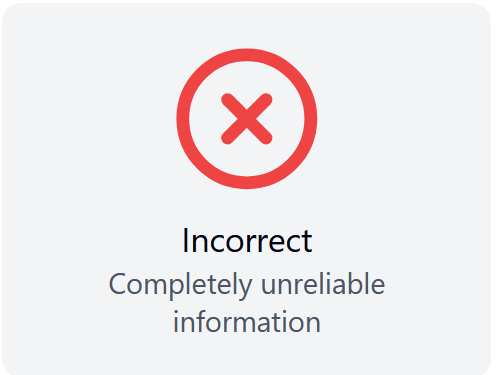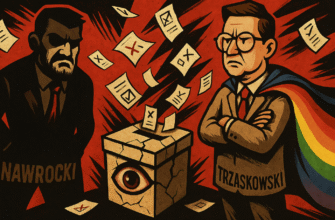On May 3, 2025, a broadcast appeared on the YouTube channel SBTV with the headline “Europe is in turmoil! Authorities are robbing Europeans in plain sight.” The guest of the “PRO Army” project on SBTV was Alexander Tishchenko, a national security expert and retired colonel, who stated the following:
Every fifth Baltic resident lives below the poverty line. Half of the Baltic people live at the social minimum level. That means they can’t save money, can’t go to the cinema, can’t even go to a café or restaurant. They live from paycheck to paycheck. That is, at a minimum. This is the social minimum. They aren’t suffering, but they have no prospects either. The scariest thing is that half of the social population in Poland is at the social minimum level. Below the poverty line, it’s certainly less there, every 15th Pole, but the social minimum is 17 million. Germany – paradoxically, there too almost half of Germans are at the social minimum. And you can go through all other countries, and I’ll say that these are serious statements, but the possibility is difficult to see there. They don’t think through some economic models that could advance Europe, right? From the perspective of budgets that could raise the level of combat readiness, equipment, and so on. So. They start… they’ve gone into the tax piggy bank. In general, the whole paradox of the situation. They’re scraping the bottom with a ladle, scraping the bottom of their countries’ social possibilities. That’s why protests are starting – teachers, doctors, workers, and all other categories who are taxpayers.
Our verdict based on the analyses conducted:
Verdict: Incorrect
Reasons:
- The thesis or statement is completely false: information from multiple sources or opinions of several experts in the specific field contradict it.
- Cause-and-effect relationships and connections clearly do not exist as claimed.
- When quoting, substantial parts are omitted, rearranged, changed, or incorrectly translated from a foreign language, resulting in a fundamental change in the meaning of what was said.
- The event occurred substantially differently than claimed.
Full video:
Verification of statistical claims
1. “Every fifth Baltic resident lives below the poverty line”
-
Latvia: According to Eurostat, in 2024 the at-risk-of-poverty rate was 21.6%.
-
Lithuania: In 2024, the at-risk-of-poverty rate was 21.5%.
-
Estonia: In 2023, 20.2% of the population was at risk of poverty.
Conclusion: The statement corresponds to official statistics, but it’s necessary to compare the poverty level in relative terms of salaries in the Baltic countries and the Republic of Belarus.
2. “Half of the Baltic people live at the social minimum level”
The term “social minimum” does not have a universal definition and can vary depending on the country. However, the claim that 50% of the population of the Baltic countries live at the social minimum level is not supported by available data.
Conclusion: The statement is not confirmed by official statistics.
3. “Half of Poland’s population lives at the social minimum level”
According to Eurostat, in 2022 the at-risk-of-poverty rate in Poland was 11.8%. No data was found confirming the claim about 50% of the population living at the social minimum level.
Conclusion: The statement does not correspond to official statistics.
4. “In Germany, half of the population is scraping the bottom of the social system”
In 2024, the at-risk-of-poverty rate in Germany was 15.5%. The claim that half of the population is in an extremely difficult social situation is not supported by official data.
Conclusion: The statement is significantly exaggerated and does not correspond to statistics.
Analysis by FIMI/DIMI criteria
1. FIMI 1.1 — Emotional vocabulary and appeal to feelings
The use of expressions such as “scraping the bottom with a ladle,” “scraping the bottom of social possibilities” is aimed at evoking an emotional reaction from the audience.
2. FIMI 2.2 — Accusations without evidence
Claims about widespread poverty and social disadvantage in the mentioned countries are not supported by specific sources or statistical data.
3. FIMI 3.1 — Lack of reliable sources
The text lacks references to official reports, studies, or statistics, which reduces its credibility.
4. DIMI — Internal information interference
Given that the speech was broadcast on a Belarusian TV channel, it can be assumed that it is aimed at forming a certain perception of the economic situation in EU countries among the domestic audience.
Let’s analyze the disinformation narratives and perform a semantic analysis:
The video claims that half of the Baltic and German people live at the level of social minimum, which may be a distortion of the actual data on poverty and living standards in these countries.
concept substitution
The impression is created that the authorities of all European countries are robbing their citizens, which can lead to a division of society into ‘authorities’ and ‘people’.
The content contains significant distortions of facts and manipulations, which may lead to disinformation about the socio-economic situation in Europe.
protests and citizen discontent
social inequality in Europe
negative
anxiety
discontent










